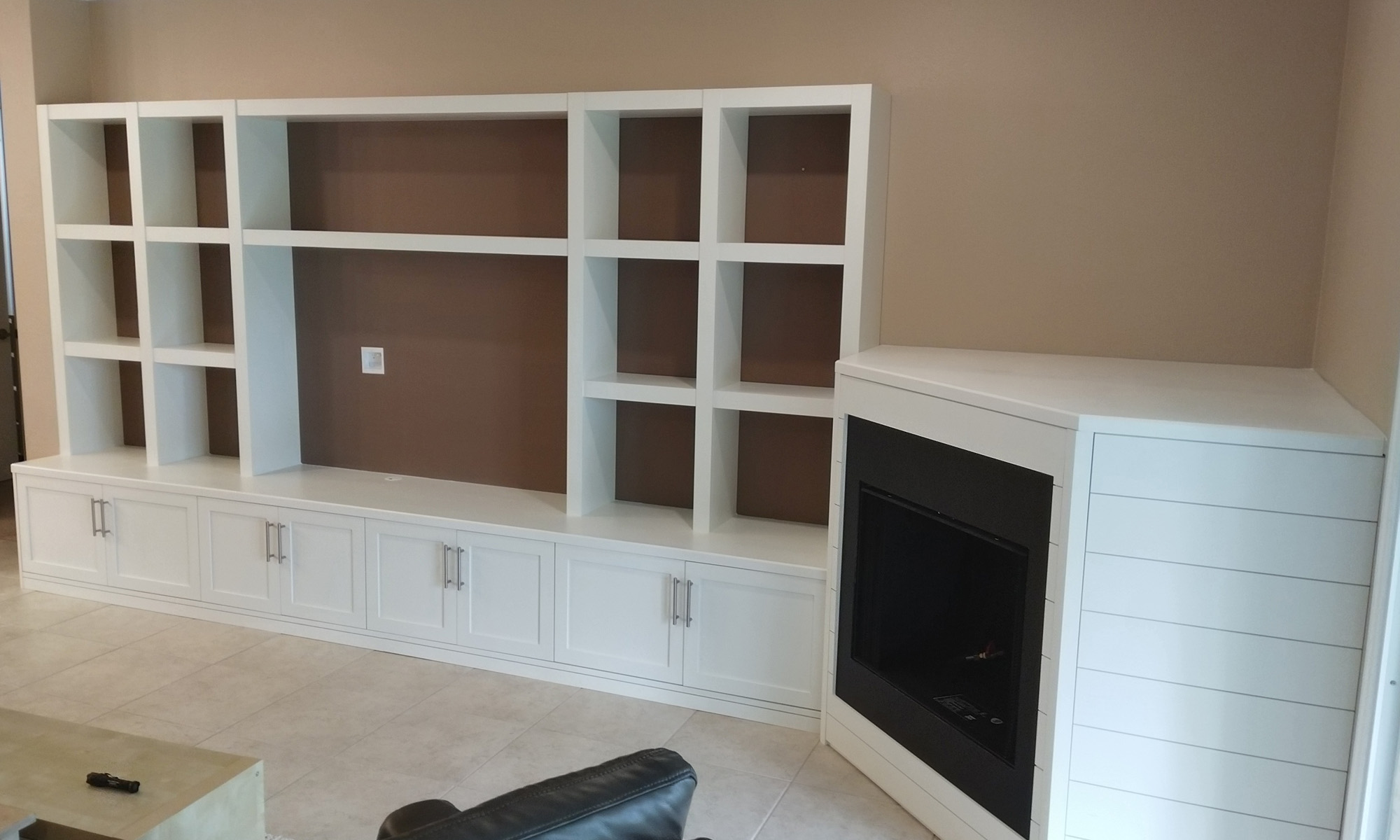I needed to make a donut chuck so that I could mount a 12″ bowl on my lathe and finish off the bottom of the bowl. I have a set of cole jaws for my jaw chuck, but they will only expand 10″.
You can click on any of the images to see a larger version.
The first step was to take a 16″ x 16″ x 3/4″ piece of plywood and find the center. I marked out three circles of 9″, 15″ and 15 3/4″ diameter. I laid out eight points on the 15″ diameter circle and drilled 5/16″ holes and inserted 1/4-20 tee nuts at each of these points.
I took another piece of 16″ x 16″ x 3/4″ plywood and placed it below the first piece. Using a transfer punch, I transferred the centers of the eight tee nuts to the second piece of plywood and then drilled 1/4″ holes at each of these points. I bolted the two pieces together using 1 1/2″ 1/4-20 bolts and cut the two pieces of plywood round, just outside of the 15 3/4″ circle. I used my jigsaw to do this as the workpiece would not have sat flush on my band saw table and I did not want the heads of the bolts to scratch my band saw table. As an aside, I used the new Xtra-Clean (T308B) blades from Bosch and was impressed at how easily they cut and how clean the cut was on both the top and bottom of the plywood.
Using my center finder I located a face plate I have dedicated to this donut chuck and attached it securely to the first piece of plywood.
I mounted the face plate and plywood pieces on the lathe and turned both pieces perfectly round. I marked a 9″ diameter circle on the front piece and drilled a 1/.4″ hole through both pieces using a drill chuck in the tail stock. I took the piece of the lathe and drilled a 5/16″ hole 3/8″ deep in the back piece of plywood and inserted a 1/4″ tee nut in that hole. Then I bolted both pieces together suing another 1 1/2″ 1/4-20 bolt.
I remounted the piece on the lathe and made a mark on the sides of the plywood pieces to help align the two pieces. Using a parting tool, I cut the 9″ diameter circle out of the front piece of plywood. I cut at an angle from the center out and took care to make sure I did not cut too deeply into the back piece of plywood. Because of the tapered cut and the center bolt the internal circle did not come loose. I had to remove all 9 bolts to take it out.
Lastly I cut a piece of high friction router pad cloth and using spray adhesive attached it to the inside face of the front section. This will help to both hold and protect the surface of the bowl.
The tee nut inserted in the center of the back piece can be used to mount a scrap piece of plywood to. A tenon that matches the internal diameter of a bowl can then be turned onto that scrap piece enabling you to mount the bowl in the donut chuck directly on center.
In my excitement at how easily the bowl mounted and how smooth and true it ran, I forgot to take a picture of the mounted bowl before I finished off the bottom. Here is a shot of the bowl mounted in the donut chuck, with the bottom finished and sanded.









Wonderful article!, I built the doughnut chuck and was going to print the article, but didn’t. It really bothers me that designers of these website pages are so persistent in their apparent colusion with paper and ink retailers that they cannot bring themselves to permit someone like myself to regularly print very useful and helpful articles for future reference from a printer friendly version that doesn’t contain lots of nonessential information in 4 inch margins on both sides of the pages that requires 5 pages of printing to obtain 2 pages of material!!!!
Dick, I’m glad you enjoyed the article and found it helpful in building the chuck.
I can assure you I’m not in collusion with any paper and ink retailers 🙂
If you look at the bottom of each article you will see a print button.
If you click on that button it will open the article in another window giving you the option to either print the article or to convert it to PDF and save on your computer. If you print it, it will just print the article and not the side bars and should print it on less pages. If you save it as a PDF you will not have to use any paper or ink and still be able to reference the article in the future.
I hope that helps you.